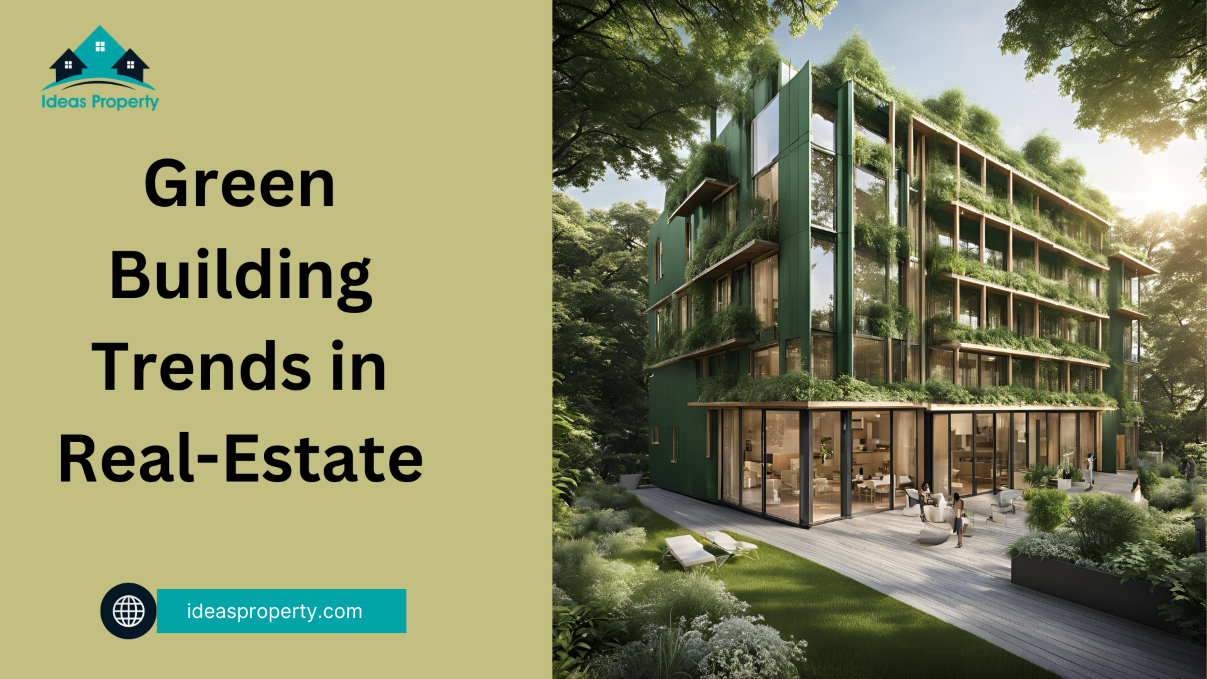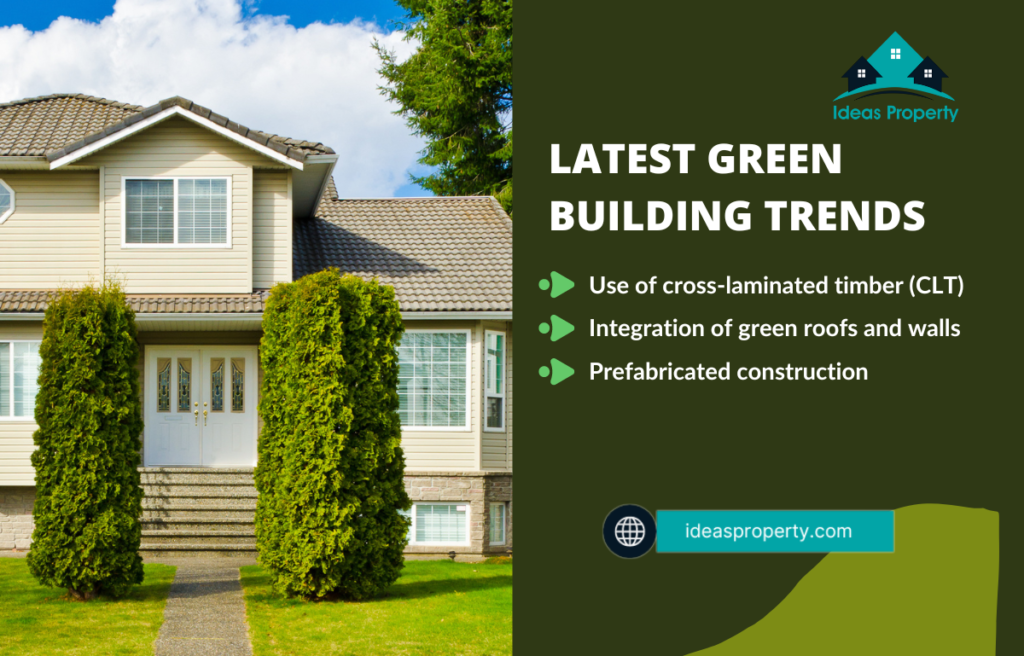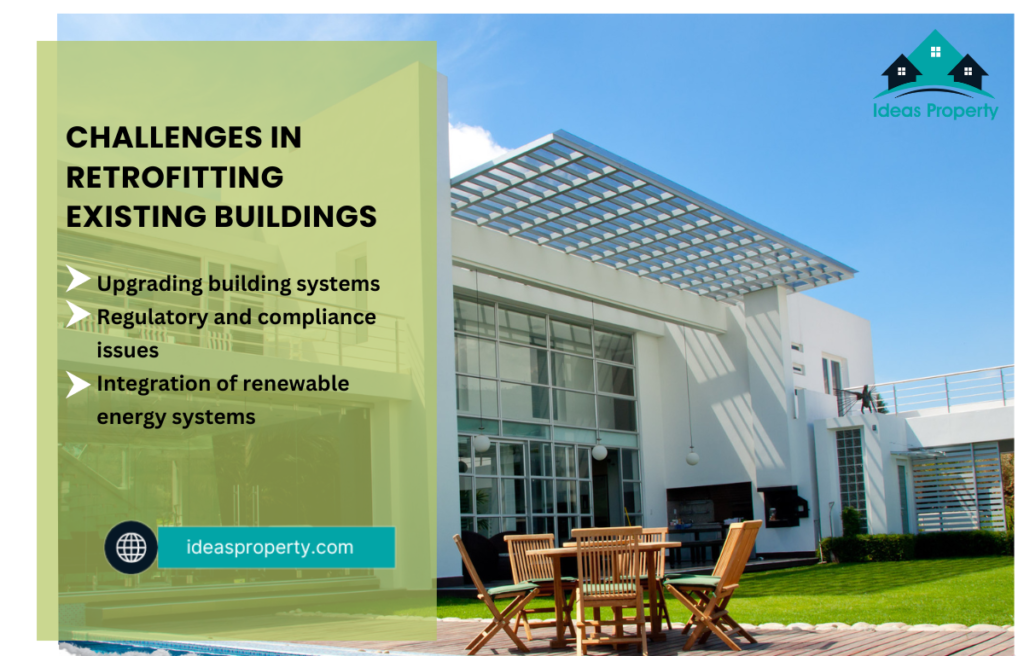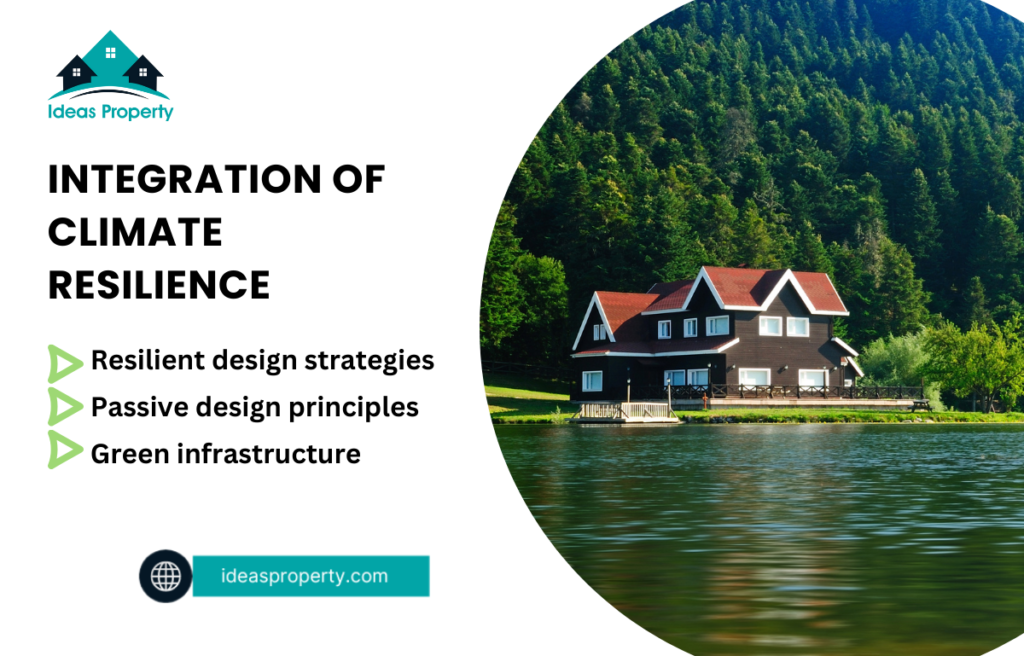Top Green Building Trends in Real Estate: Innovations for 2024

In recent years, the construction industry has seen a significant shift towards sustainable practices, driven by an increasing awareness of environmental impact and the need for energy efficiency. Green building trends have emerged as a response to these demands, focusing on reducing carbon footprints, enhancing resource efficiency, and creating healthier living environments. As we move further into 2024, these trends continue to evolve, incorporating advanced technologies and innovative materials to push the boundaries of what’s possible in eco-friendly construction. From smart building technologies to renewable energy integration, green building trends are setting new standards for sustainability in the built environment.
What are the latest green building trends for 2024?
In 2024, the green building landscape is being shaped by several key trends that focus on sustainability, efficiency, and resilience. One of the most prominent trends is the increased use of cross-laminated timber (CLT). CLT is gaining popularity due to its renewable nature and the ability to significantly reduce carbon emissions compared to traditional materials like concrete and steel. Its adoption in large-scale projects is growing, offering both environmental benefits and aesthetic appeal.
Another trend is the integration of green roofs and walls. These features are becoming more common in urban environments, providing natural insulation, reducing energy consumption, and enhancing biodiversity. Green roofs and walls also play a critical role in stormwater management by absorbing rainwater and reducing runoff, making them an essential component of sustainable urban design.
Lastly, modular and prefabricated construction techniques are revolutionizing the industry. These methods are not only efficient but also sustainable, reducing construction waste and enabling the reuse of building components. Prefabricated elements are designed for easy disassembly, supporting a circular economy within the construction sector.

How are smart technologies influencing sustainable architecture?
Smart technologies are revolutionizing green building trends, enabling buildings to operate more efficiently and sustainably. Smart building automation is at the forefront of this transformation. Advanced IoT sensors and analytics allow buildings to gather real-time data, optimizing the performance of systems like HVAC, lighting, and plumbing. This data-driven approach ensures that buildings use energy as efficiently as possible, reducing waste and operational costs.
Another significant impact of smart technologies is seen in the adoption of cloud-based Building Management Systems (BMS). These systems enhance scalability, flexibility, and data analysis capabilities, allowing building managers to monitor and control energy use more effectively. The integration of these technologies not only contributes to energy efficiency but also improves occupant comfort and reduces the overall carbon footprint of buildings.
Additionally, energy-efficient HVAC systems equipped with smart technology are becoming a standard in green buildings. These systems, often featuring high AFUE (Annual Fuel Utilization Efficiency) ratings, can dramatically reduce energy consumption, particularly in heating and cooling, which are major contributors to a building’s utility costs.
How does sustainable building certification impact market value?
Sustainable building certifications, such as LEED (Leadership in Energy and Environmental Design), BREEAM (Building Research Establishment Environmental Assessment Method), and WELL, significantly enhance the market value of properties. These green building trends are more desirable due to their lower operating costs, higher tenant satisfaction, and reduced environmental impact. Certified buildings often achieve higher rental rates and sale prices compared to non-certified buildings because they appeal to environmentally conscious investors and tenants.
The financial benefits extend beyond just initial sale and rental premiums. Green certifications attract more investment, particularly from funds focused on sustainability. Investors are increasingly prioritizing properties that meet stringent environmental standards as part of their Environmental, Social, and Governance (ESG) strategies. This trend is driven by the long-term cost savings associated with reduced energy use and maintenance, as well as the positive branding associated with green buildings.
Furthermore, sustainable building certifications can also lead to lower financing costs. Lenders are often more willing to offer favorable loan terms to certified buildings because they represent a lower risk due to their enhanced marketability and resilience. For instance, green buildings often qualify for lower interest rates or better terms on green bonds and other sustainability-linked financing options.
What are the challenges in retrofitting existing buildings for sustainability?
Retrofitting existing buildings for sustainability presents several significant challenges, primarily due to the limitations of older structures that were not originally designed with energy efficiency or environmental impact in mind. One of the major challenges is upgrading building systems—such as HVAC, plumbing, and electrical systems—to meet modern energy efficiency standards. These upgrades can be costly and technically complex, especially in historic buildings where structural integrity and aesthetics must be preserved.
Another challenge is the integration of renewable energy systems. Older buildings may not have the necessary infrastructure or structural capacity to support the installation of solar panels, wind turbines, or other renewable energy systems. This limitation often requires creative solutions, such as external installations or the use of less intrusive technologies, which can add to the overall cost and complexity of the retrofit.
Furthermore, regulatory and compliance issues can pose significant hurdles. Many older buildings are subject to strict regulations, particularly if they are located in historic districts or are considered heritage sites. Navigating these regulations while attempting to implement sustainable upgrades can be challenging, requiring careful planning and often involving multiple stakeholders. Despite these challenges, retrofitting buildings is essential for reducing the carbon footprint of the built environment and achieving broader sustainability goals.

What role do renewable energy sources play in modern green buildings?
Renewable energy sources are crucial in modern green buildings, driving the shift towards sustainability and energy independence. Solar energy remains one of the most widely adopted renewable resources, with innovations such as building-integrated photovoltaics (BIPV) becoming increasingly popular. These systems not only generate electricity but also serve as building materials, such as solar panels integrated into windows or roofs, providing both energy and insulation benefits.
Wind energy is also gaining traction, especially in buildings located in regions with favorable wind conditions. Wind turbines, both on-site and offshore, contribute to the energy needs of buildings, reducing reliance on non-renewable energy sources. Although more challenging to implement in urban settings due to space and noise concerns, advancements in technology are making wind energy a viable option for green buildings.
Moreover, the integration of energy storage solutions, such as advanced batteries, is enhancing the viability of renewable energy in buildings. These systems store excess energy generated by solar and wind power, ensuring a stable supply of clean energy even when natural conditions are not optimal.
Together, these renewable energy sources are not only reducing carbon footprints but also helping buildings achieve net-zero energy goals, positioning them as essential components in the future of sustainable construction.
What materials are leading the way in eco-friendly construction?
Several innovative materials are leading the charge in eco-friendly construction, helping to reduce the environmental impact of new buildings. Cross-Laminated Timber (CLT) is one of the most notable materials in this category. CLT is a highly sustainable wood product that offers excellent structural performance and reduces the carbon footprint of buildings. Its use is growing in large-scale projects as it provides a renewable alternative to traditional construction materials like concrete and steel.
Another material making significant strides is recycled and reclaimed materials. These include reclaimed wood, recycled steel, and other materials salvaged from previous constructions. Using these materials not only reduces the demand for new resources but also minimizes waste that would otherwise end up in landfills. Bamboo is also gaining popularity as a rapidly renewable resource, especially in flooring and other finishes, due to its fast growth rate and strength.
Rammed earth and mycelium are also emerging as eco-friendly options. Rammed earth, made by compacting natural earth and gravel, is not only sustainable but also provides excellent thermal mass, which helps in regulating indoor temperatures. Mycelium, the root structure of fungi, is being used in insulation and building blocks for its biodegradable properties and low environmental impact.
How are green roofs and walls transforming urban environments?
Green roofs and walls are playing a transformative role in urban environments by enhancing sustainability and improving the quality of life in cities. Green roofs provide natural insulation, reducing the need for artificial heating and cooling, which in turn lowers energy consumption. They also contribute to better stormwater management by absorbing rainwater, reducing the burden on urban drainage systems, and minimizing flood risks.
Moreover, green walls, or vertical gardens, are improving air quality in densely populated areas. These walls absorb carbon dioxide and other pollutants while releasing oxygen, helping to mitigate the effects of urban pollution. The aesthetic benefits of green walls are also significant, as they add natural beauty to otherwise gray urban landscapes, contributing to the well-being of residents.
In addition to their environmental benefits, green roofs and walls enhance biodiversity in cities by providing habitats for various species of birds, insects, and plants. This increase in urban biodiversity supports ecosystem resilience and adds to the overall sustainability of urban areas. As cities continue to grow, the integration of green roofs and walls is becoming an essential component of urban planning, offering a practical solution to some of the most pressing environmental challenges.
What is the importance of water efficiency in green buildings?
Water efficiency is a critical component of green building design, directly contributing to sustainability by reducing the consumption of this vital resource. Green buildings aim to minimize water usage through various innovative technologies and practices, such as low-flow fixtures, rainwater harvesting systems, and greywater recycling. These measures significantly reduce the demand for potable water, thereby lowering utility costs and easing the burden on municipal water supplies.
In addition to cost savings, water-efficient green buildings play a vital role in conserving natural water resources. By implementing systems that use less water and recycle greywater for non-potable uses, such as irrigation or flushing toilets, green buildings help to preserve fresh water for future generations. This conservation effort is increasingly important as global populations grow and the demand for water continues to rise.
Moreover, water efficiency is closely linked to energy efficiency. Reducing water use also cuts down on the energy required to pump, heat, and treat water. This dual benefit makes water efficiency a cornerstone of sustainable building practices, contributing to both environmental preservation and the overall efficiency of the building.
How does indoor air quality affect green building design?
Indoor air quality (IAQ) is a fundamental consideration in green building design, as it directly impacts the health and well-being of building occupants. Poor IAQ can lead to a range of health issues, including respiratory problems, allergies, and other chronic conditions. As a result, green buildings are designed with materials and systems that minimize the presence of indoor pollutants, such as volatile organic compounds (VOCs), mold, and particulate matter.
To improve IAQ, green buildings often incorporate advanced ventilation systems that ensure a steady flow of fresh air while filtering out contaminants. These systems are designed to maintain optimal humidity levels, prevent mold growth, and reduce the concentration of indoor pollutants. Additionally, green building materials, such as low-VOC paints and finishes, are selected to reduce the emission of harmful chemicals into the indoor environment.
The focus on IAQ in green building design is not only about health but also about enhancing comfort and productivity. Studies have shown that good IAQ can lead to improved cognitive function, higher productivity, and overall satisfaction among occupants. This holistic approach to building design underscores the importance of IAQ in creating healthy, sustainable living and working environments.
How is climate resilience being integrated into green building trends?
Climate resilience is increasingly being integrated into green building practices as the construction industry seeks to address the growing risks associated with climate change. Resilient design strategies involve creating buildings that can withstand extreme weather events, such as hurricanes, floods, and heatwaves, while continuing to provide safe, comfortable environments for occupants. This includes the use of robust materials, reinforced structures, and flood-resistant designs.
Incorporating passive design principles is another key aspect of climate resilience. Passive design reduces reliance on mechanical systems by optimizing natural ventilation, daylighting, and thermal mass to regulate indoor temperatures. This approach not only enhances energy efficiency but also ensures that buildings remain habitable during power outages or other disruptions caused by extreme weather.
Moreover, green infrastructure—such as green roofs, rain gardens, and permeable pavements—plays a crucial role in enhancing climate resilience. These features help manage stormwater, reduce the urban heat island effect, and provide natural insulation. By integrating these elements into building designs, green buildings can better withstand and recover from the impacts of climate change, ultimately contributing to more sustainable and resilient urban environments.

Green building trends for 2024 reflect a significant shift towards sustainability, driven by the need to address environmental challenges and enhance the efficiency and resilience of the built environment. From the adoption of advanced materials like cross-laminated timber and innovative technologies such as smart building automation, to the integration of renewable energy sources and water-efficient systems, these trends underscore the construction industry’s commitment to creating eco-friendly and sustainable spaces.
The importance of sustainable building certifications in boosting market value, along with the growing emphasis on climate resilience, highlights the evolving priorities in building design and construction. These trends not only contribute to reducing the carbon footprint but also offer financial benefits through increased property values, reduced operational costs, and improved indoor environmental quality.
As the construction industry continues to innovate, retrofitting existing buildings for sustainability remains a critical challenge, requiring a balance between preserving historical integrity and implementing modern sustainable practices. Overall, the integration of these green building trends and smart home technology into both new constructions and retrofits is essential for advancing towards a more sustainable, resilient, and healthier future.
